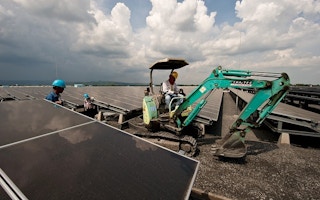Businesses today are inundated with dozens of different approaches to thinking about natural capital - that is, natural resources such as air, water, solar, soil, plants and minerals that benefit people.
To continue reading, subscribe to Eco‑Business.
There's something for everyone. We offer a range of subscription plans.
- Access our stories and receive our Insights Weekly newsletter with the free EB Member plan.
- Unlock unlimited access to our content and archive with EB Circle.
- Publish your content with EB Premium.
In response, the Natural Capital Coalition has developed a standardised framework to provide companies with a single guide to make sense of natural capital and put a dollar value to it, shared Richard Spencer, head of sustainability at the Institute of Chartered Accountants in England and Wales (ICAEW), at a seminar in Singapore on July 2016.
It published the global standardised framework – Natural Capital Protocol, in mid July, in the United Kingdom.
The coalition - headquartered in London and funded by The Gordon and Betty Moore Foundation and International Finance Corporation (IFC), World Bank Group - brings together organisations such as businesses, environmental groups and government agencies to harmonise approaches to natural capital.
The organisation evolved from a non-profit called The Economics of Ecosystems and Biodiversity for Business Coalition (TEEB), which had gathered stakeholders to ‘shape the future of business thinking and action on natural capital’, in 2014.
ICAEW hosts the coalition and is the grantee for funds, which are held in trust for the coalition.
Spencer said the protocol will help companies identify, measure and value both their direct and indirect impacts and reliance on natural resources. This data will help businesses make better decisions in terms of how they operate.
“There is a whole range of information around the natural environment that businesses do not have, which could lead them to not make the right decisions,” he noted.
Spencer stressed that the protocol is not a sustainability reporting framework but a guide to support internal management decisions.
Also, understanding the economic value of natural capital will be fundamental for businesses, given the risks, such as high costs of raw materials or reputational issues, associated with the depletion of natural resources like water and minerals, and climate change, he said.
However, there are two key challenges for using the framework – data management and use of this data, and getting businesses to begin accounting for natural resources.
As businesses will begin to receive a large amount of data to assess the impacts and dependencies on natural resources, Spencer expects a big change in the way companies keep their own data, with companies starting to release data to make it accessible to the public.
Moreover, with the “mind boggling” amount of data collected, processing this information will require data analytics - investigating raw data to make it meaningful. This will help businesses understand how the availability and use of natural resources impact on their supply chains and operations, he added.
This in some respect will change the field of accountancy, for example, as along with increasing collaborative work, accountants will become curators and gatekeepers of information to help people find the right data, noted Spencer.
“Currently the coalition has 500 companies signed to use the protocol, but getting the next million businesses to use the framework, is a challenge”, he added.










